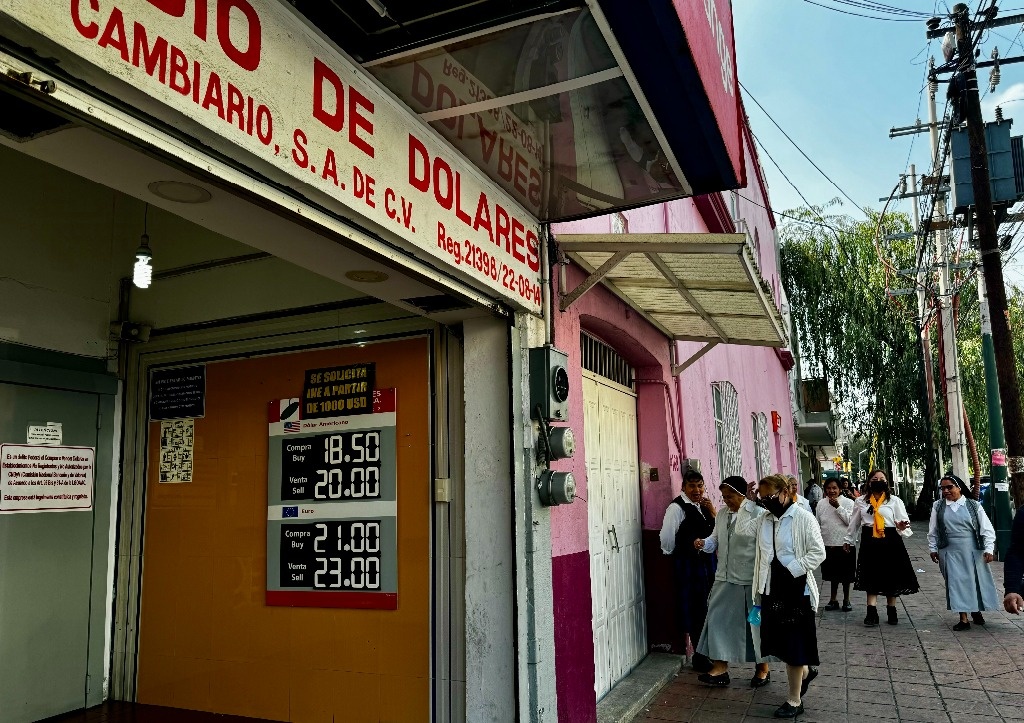Mexico City. The Mexican peso and the stock market fell this Friday, although a week of strong volatility was set to end with gains, while investors continued to weigh the implications of Donald Trump’s return to the White House.
According to media reports, the president-elect asked Robert Lighthizer, a firm believer in tariffs, to return as US Trade Representative. Lighthizer was a key figure in the renegotiation of the trade agreement with Mexico.
The domestic currency MXN= was trading at 20.2400 per dollar, with a depreciation of 2.25 percent compared to the LSEG reference price on Thursday, when it gained 1.42 percent. A day earlier, after the US election day, it briefly shot up to 20,8038 units, its worst level in more than two years.
The session’s retreat was aligned with a weak performance shown by many assets abroad, after a new stimulus package in China failed to meet expectations.
Even so, the peso was set to end the week with a cumulative appreciation of 0.15 percent.
Locally, attention was beginning to turn to the Bank of Mexico’s next monetary policy announcement on Thursday, after the Fed cut interest rates the day before and local figures showed that, although general inflation accelerated in October, the underlying index continued to decline.
Next week will also be marked by the presentation of the government’s budget package for next year, in which the administration of President Claudia Sheinbaum has the challenge of reducing the fiscal deficit, an issue of concern among rating agencies and investors.
The benchmark S&P/BMV IPC .MXX stock index fell 1.31 percent to 51,627.21 points, although over the course of the week it added an advance of 2 percent.
The titles of Gentera GENTERA.MX, specialized in credit services, led the losses on Friday, with 4.82 percent less to 25.88 pesos, followed by those of the retailer La Comer LACOMERUBC.MX, which subtracted 4.04 percent to 36.32 pesos.
In the secondary debt market, the yield on the 10-year bond MX10YT=RR fell eight basis points to 9.89 percent, the same as the 20-year rate MX20YT=RR, which stood at 10.14 percent.
!function(f,b,e,v,n,t,s)
{if(f.fbq)return;n=f.fbq=function(){n.callMethod?
n.callMethod.apply(n,arguments):n.queue.push(arguments)};
if(!f._fbq)f._fbq=n;n.push=n;n.loaded=!0;n.version=’2.0′;
n.queue=[];t=b.createElement(e);t.async=!0;
t.src=v;s=b.getElementsByTagName(e)[0];
s.parentNode.insertBefore(t,s)}(window, document,’script’,
‘
fbq(‘init’, ‘133913093805922’);
fbq(‘track’, ‘PageView’);
fbq(‘track’, ‘Contact’);
fbq(‘track’, ‘Donate’);
fbq(‘track’, ‘FindLocation’);
fbq(‘track’, ‘Lead’);
fbq(‘track’, ‘Search’);
fbq(‘track’, ‘Subscribe’, {value: ‘0.00’, currency: ‘MXN’, predicted_ltv: ‘0.00’});
fbq(‘track’, ‘ViewContent’);
#Peso #Mexican #stock #market #decline #week #volatility #due #Trump
–
